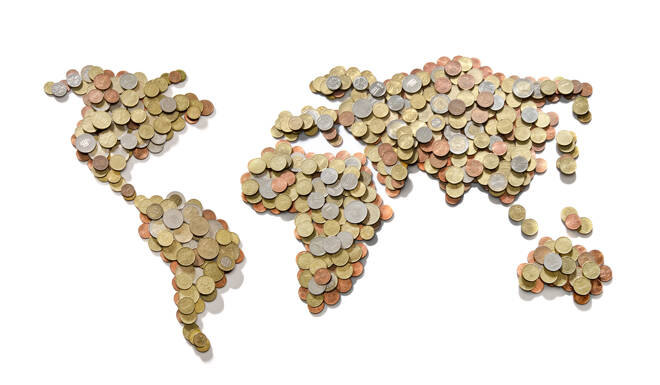Advertisement
Advertisement
Global Economic Outlook 2021: Global Growth Recovers amid High Debt; Changing Fiscal, Monetary Frameworks
Updated: Dec 9, 2020, 16:06 GMT+00:00
The global economy will rebound by around 5.4% next year after the sharpest contraction of the post-war era in 2020 when output will have fallen by about 4.0%, but the recovery will prove uneven amid an overhang of global debt.
Explainer video: Scope Ratings presents its 2021 Global Outlook
The pace of 2021’s recovery will be asymmetric across countries. China, where coronavirus first struck last December, will lead the global recovery with strong 9.9% growth next year – accounting for more than a third of global growth – with other leading global economies recording turnarounds: 4% in the US, 5.6% in the euro area, 3% in Japan and 6.6% in the UK.
We continue to expect recovery to gain a firmer foothold by the early spring of 2021 as vaccines are made available to at-risk segments of the population, better weather slows virus transmission and governments ease social and economic restrictions.
Full economic normalisation in 2021 and beyond will remain vulnerable to setbacks, however – partly from the risk of another wave of infection in countries that ease restrictions too speedily – such as in advance of the coming holidays.
There are both upside and downside risks to the 2021 global outlook, compared with our assessment of a downside skew to risk in entering 2020.
Debt is high and rising, although central banks mitigate immediate liquidity risks
Global government debt is close to a record 100% of GDP, while public debt trajectories are unlikely to reverse significantly post-crisis in the cases of some government borrowers. This represents a constraint for sovereign rating outlooks for countries such as France and Spain.
Rising household and corporate debt levels, in addition, hold implications for financial stability. Non-performing loans and defaults could rise as extraordinary support provided to protect households, jobs and business tapers as the crisis moderates next year.
Central banks have mitigated immediate sovereign liquidity risks in advanced economies. Due to central bank action, financing rates for governments in advanced economies have fallen compared with pre-crisis levels despite much higher debt. However, any normalisation steps of central bank policies could lead to a repricing of risk. In emerging economies, financing constraints are more significant as increased debt has escalated currency and debt crises.
Budget strategies transitioning to pro-growth orientation rather than austerity
The budgetary strategies of governments post-crisis will concentrate on maintaining pro-growth policies to achieve fiscal consolidation rather than relying on austerity as they did after the global financial crisis.
However, this carries its own long-term risks. If sustainably higher growth does not materialise after investment spending over the coming years, large deficits could translate to unsustainable debt dynamics, forcing more permanent central bank interventions.
Accommodative monetary policy and rising euro to support euro area borrowers?
Monetary policy will remain highly accommodative. Revisions to central banks’ policies in the context of asset purchases and ambitions to support green transitions could transform global central banking in the years ahead.
Meanwhile, the dollar remains the dominant global currency, with the euro still far behind entering 2021. Still, recent developments – notably the enlarged pool of euro area safe assets as the European Union issues debt to finance recovery – could enhance the euro’s global reserve currency role to challenge the dollar’s dominance longer term, with positive rating implications for euro area sovereign issuers over time.
EU issuance to finance the Recovery Fund as well as ECB asset purchases mark a fundamental transition in EU fiscal and monetary frameworks towards closer implicit fiscal and monetary union. This is positive for EU borrowers even though the landing zone for an EU architecture post-crisis remains unclear.
Environmental risks as a growingly significant thematic
We also expect governments, regulators and investors to pay increasing attention to environmental, social and governance risks, partly from the disruption caused by Covid-19.
Scope’s sovereign rating methodology now explicitly accounts for environmental credit risks via three factors: i) the transition risks to lower-carbon economies, ii) natural disaster risk and iii) ecological wealth.
2021 rating actions to hinge upon impact of crisis, policy response and credit profile
Scope currently rates 10 sovereign governments of a portfolio of 36 rated countries with a Negative Outlook, including the UK and Japan, while Ireland, Greece and Lithuania hold Positive Outlooks. Rating actions in 2021 will depend on the impact of the crisis and expected speed of recovery; the efficacy of monetary and fiscal policy responses; as well as the sovereign’s credit profile at a given rating level.
For a look at all of today’s economic events, check out our economic calendar.
Giacomo Barisone is Managing Director of Sovereign and Public Sector ratings at Scope Ratings GmbH.
About the Author
Dr. Giacomo Barisonecontributor
Giacomo Barisone is Head of Public Finance and is responsible for Scope’s sovereign and public finance rating activities across Europe.
Advertisement
